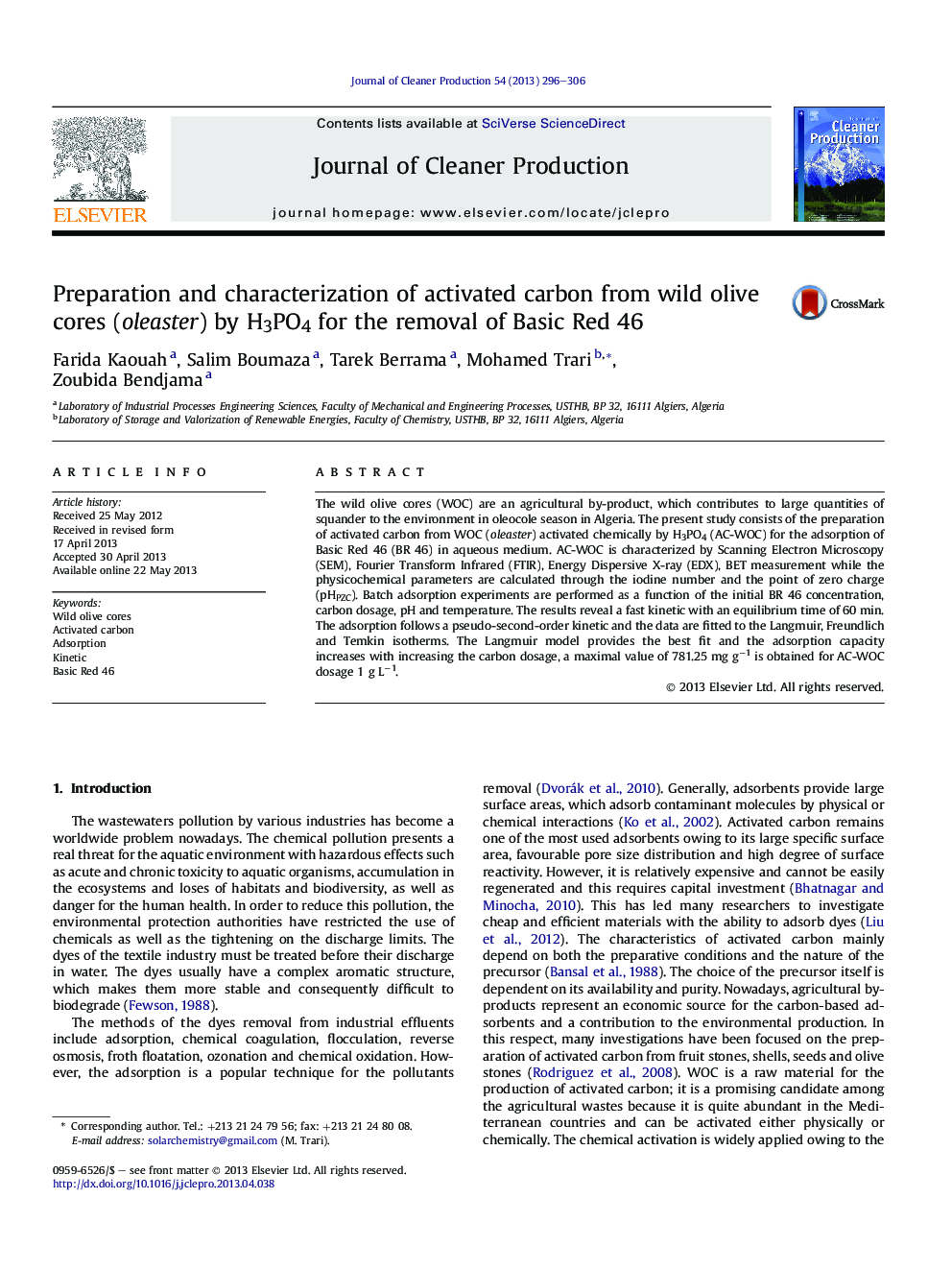| Article ID | Journal | Published Year | Pages | File Type |
|---|---|---|---|---|
| 1745307 | Journal of Cleaner Production | 2013 | 11 Pages |
•The activated carbon from wild olive cores is evaluated for BR 46 removal.•The characterization of the produced activated carbon is achieved.•The activated carbon is successfully applied for BR 46 removal.•The influent parameters (pH, concentration and dose) on BR 46 removal are studied.•The BR 46 removal obeys to a pseudo-second-order kinetic.
The wild olive cores (WOC) are an agricultural by-product, which contributes to large quantities of squander to the environment in oleocole season in Algeria. The present study consists of the preparation of activated carbon from WOC (oleaster) activated chemically by H3PO4 (AC-WOC) for the adsorption of Basic Red 46 (BR 46) in aqueous medium. AC-WOC is characterized by Scanning Electron Microscopy (SEM), Fourier Transform Infrared (FTIR), Energy Dispersive X-ray (EDX), BET measurement while the physicochemical parameters are calculated through the iodine number and the point of zero charge (pHPZC). Batch adsorption experiments are performed as a function of the initial BR 46 concentration, carbon dosage, pH and temperature. The results reveal a fast kinetic with an equilibrium time of 60 min. The adsorption follows a pseudo-second-order kinetic and the data are fitted to the Langmuir, Freundlich and Temkin isotherms. The Langmuir model provides the best fit and the adsorption capacity increases with increasing the carbon dosage, a maximal value of 781.25 mg g−1 is obtained for AC-WOC dosage 1 g L−1.
